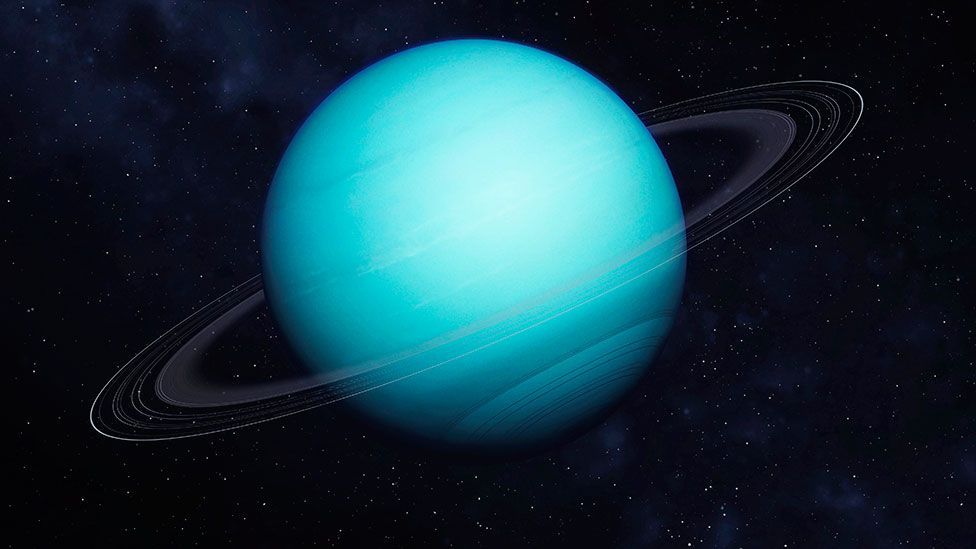
30 interesting facts about Uranus
- 👁️ 259
Uranus is the seventh planet from the Sun and the third largest in terms of size and mass in our solar system. Despite its size, Uranus was not discovered until 1781, due to its distance from the Sun and its faint appearance. Despite its late discovery, Uranus has proven to be a fascinating and unique world, with a number of unique characteristics and features that make it a subject of ongoing scientific study.
- Uranus is approximately 1.8 billion kilometers (1.1 billion miles) away from the Sun.
- Uranus is the third largest planet in our solar system in terms of size and mass.
- Uranus has a diameter of approximately 50,000 km (31,000 miles).
- Uranus is a gas giant, meaning it is primarily composed of hydrogen, helium, and methane.
- Uranus has a very faint and blue appearance due to the presence of methane in its atmosphere.
- Uranus has 27 known moons, the largest of which is Titania.
- Uranus has 13 known rings, which are narrow and dark in appearance.
- Uranus has a very weak magnetic field, which is tilted at an angle of 60 degrees compared to its axis of rotation.
- Uranus rotates on its side, with its axis of rotation tilted at an angle of 98 degrees compared to its orbit around the Sun.
- Uranus’s unusual rotational axis is thought to be the result of a collision with a massive object early in its history.
- Uranus has a very cold atmosphere, with temperatures reaching as low as -224°C (-371°F).
- Uranus’s atmosphere is composed of hydrogen, helium, methane, and other trace gases.
- Uranus has a number of cloud features, including bright clouds and cloud bands.
- Uranus’s atmosphere is relatively featureless compared to other gas giants like Jupiter and Saturn.
- Uranus has very weak weather activity, with only a few small storms observed.
- Uranus’s weather patterns are driven by the weak heat from its interior and the weak sunlight it receives from the Sun.
- Uranus has a very thin and tenuous ring system, which is composed of small particles of ice and rock.
- Uranus’s rings are thought to have formed from the breakup of one or more moons.
- Uranus’s moons are thought to have formed from a process called accretion, in which small particles come together to form larger objects.
- The largest moon of Uranus, Titania, is thought to have a rocky core and an icy mantle.
- Uranus’s moons are named after characters from the works of William Shakespeare and Alexander Pope.
- Uranus was first discovered by William Herschel in 1781.
- Uranus was initially classified as a star before being recognized as a planet.
- Uranus was the first planet to be discovered using a telescope.
- Uranus was initially thought to be a comet before being recognized as a planet.
- Uranus was named after the ancient Greek deity of the sky, Uranus.
- Uranus is sometimes referred to as the “ice giant” due to its composition and distance from the Sun.
- Uranus is not visible to the naked eye and can only be seen with a telescope.
- Uranus has a very slow rotation rate, taking 84 Earth years to complete one rotation.
- Uranus has a very long orbital period, taking 84 Earth years to complete one orbit around the Sun.
Uranus is the seventh planet from the Sun and the third largest in terms of size and mass in our solar system. Despite its size, Uranus was not discovered until 1781, due to its distance from the Sun and its faint appearance. Despite its late discovery, Uranus has proven to…